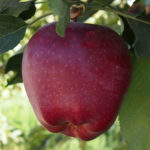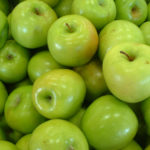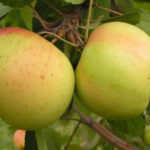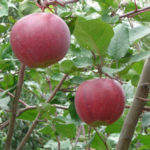Apple variety Pinova
Continuing our acquaintance with the winter varieties of apple trees, which differ not only in good keeping quality, but also in excellent taste, it is worth mentioning the German variety Pinova (also known as Corail, Sonata, Pinata). It was created by German breeders, crossing a rather recognizable Golden Delicious with the lesser-known Klivia (Geheimrat Dr. Oldenburq x Cox'c Orange Pippin). The novelty appeared in 1965 in Saxony. She gained fame in 1986. It gained high popularity not only at home, but also in Europe, America, and some countries of the former USSR. In Russia, they also know about it, but the variety was added to the State Register of Breeding Achievements of the Russian Federation only in 2016 with admission in the North Caucasus region (Republics of Adygea, Dagestan, Ingushetia, North Ossetia-Alania, Crimea, Kabardino-Balkarian, Chechen, Krasnodar Territory, Rostov Region, Stavropol Territory). The applicant and originator of the species was JSC “Sad-Giant”.
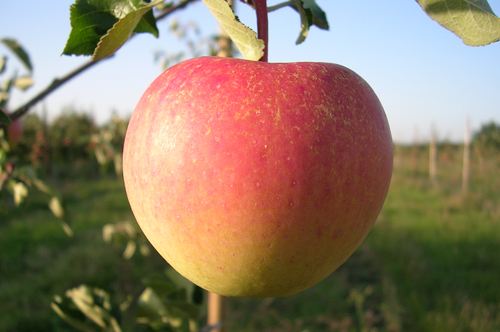
Description
The tree is fast-growing at a young age, the height exceeds the average size - just over 3.5 meters. Having entered the fruiting period, Pinova grows at a moderate pace. The crown of the apple tree is reverse-pyramidal, spreading, but not too dense. Straight branches are located compactly, departing from the trunk at an angle close to a straight line. The ends of the branches are directed upwards. Young shoots are red-brown. The bark of ripe shoots is brown-green, covered with light, small lenticels. Leaves are oblong, short-pointed, normal size, green in color. The surface is smooth, with delicate nerves, matte, the underside of the leaf is pubescent. The edge is blunt-serrate, broad-wavy. The plate is moderately curved. The petiole is long, of medium thickness, uncolored. Fruiting is mixed - the fruits are formed on spears, fruit twigs and ringlets. In southern gardens, the variety bears fruit on last year's increments. The flowers of the apple tree are white, not very large, saucer-shaped.
The fruits of the Pinova variety resemble Golden Delicious, the same one-dimensional, conical, regular shape, with a slightly ribbed surface. Apples are relatively large in size, the State Register describes a mass of 170 grams, in other sources - 170-200 grams. The funnel is sharp-conical, of medium depth and width, rustiness is not very pronounced. The saucer is not wide, of medium depth, the cup is closed. The peduncle is medium in length and thickness, curved. The skin is nasty and shiny, thin, but strong. In color, the fruits of our heroine resemble Clivia apples. The main color is yellow-greenish, the varietal cover color occupies about 60 -70% of the surface in the form of a red-striped blurred blush. Subcutaneous points are light, small. The pulp is of a pleasant creamy color, not too dense, medium coarse, fine-grained, very juicy. The taste is excellent, sweet, the aroma is average. Fresh fruit tasting - 5 points. It is no exaggeration to say that gardeners all over the world recognize this taste as one of the best. 100 grams of raw pulp contains: 15.2% dry matter, 12.1% sugar, 0.37% acid, 2.0 mg vitamin C.
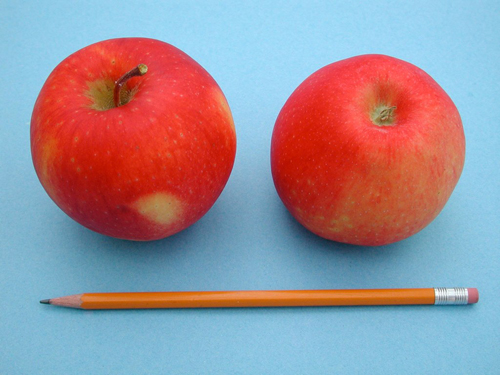
Characteristics
- Pinova pleases gardeners with excellent early maturity. The apple tree begins to bear fruit already in the 2nd year after planting. Experienced gardeners recommend cutting off from 80 to 100% of the flowers in the first year of flowering, so that the young plant can take root properly;
- annual fruiting, stable. Fruit buds are laid in large numbers, it is not for nothing that the German variety is recognized as one of the most reliable;
- nature often interferes with the ripening process, therefore somewhere the removable maturity occurs earlier - at the end of September, and somewhere at the beginning of October;
- the yield is very good. According to the State Register, the average was 495 c / ha. By the age of five, the tree gives off more than 30 kg, and then the yield goes on increasing. But experienced gardeners warn that the tree is very hardworking, prone to being overloaded with crops, which lowers its quality.Therefore, it is necessary to carry out rationing in order to maintain the health of the culture and get high-quality apples;
- the immunity of the apple tree is good, the State Register notes resistance to diseases and pests. Gardeners also confirm this, noting that Pinov's scab resists perfectly, but can be affected by powdery mildew. Medium resistant to bacterial burns;
- winter hardiness of the variety is good in the growing area. According to some reports, the tree easily tolerates -25 ° C. Therefore, the species is best grown in regions with warm and temperate climates. But even in favorable areas, winter hardiness will significantly decrease if the variety is planted on waterlogged soils, especially in lowlands;
- our heroine quickly adapts to adverse weather conditions. In particular, the State Register notes high heat resistance and drought resistance. This is especially important in the south, where dry air prevails for a long time and there is no precipitation;
- our heroine is self-infertile. This is perhaps the only big drawback. But it is easy to fix it by planting nearby apple trees suitable for pollination - Idared, Gloucester, Gala, Golden Delicious, Elstar, Melrose, Champion... In addition, Pinova herself is recognized as an excellent pollinator. Its flowers do not open all at once, but gradually, having managed to serve as a pollinator for many species. By the way, such a leisurely blooming is appreciated in cool regions where return frosts occur;
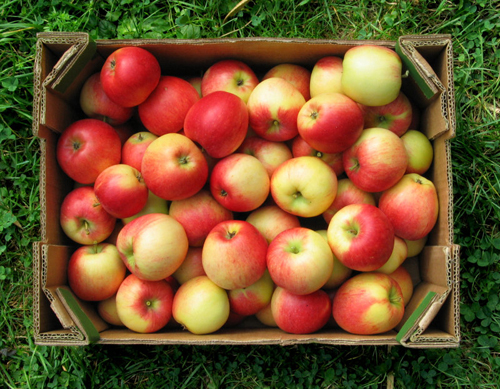
- the transportability of the fruits is not bad, but the harvest should be done with care, because the pulp is not dense enough;
- keeping quality is beyond praise, the crop can be stored longer than many other varieties. Despite the fact that the skin is thin, it perfectly protects the fruits from wilting and preserves the juiciness of the pulp, but only if the storage standards are observed. There is evidence that apples can lie in the refrigerator until the beginning of summer;
- the way of use is universal. The sweet taste makes apples an excellent dessert, and the vitamin composition helps maintain body strength in winter. From the harvest of the Pinova variety, you can also make jam, jam, make compote, juice.
Planting and leaving
The apple tree is best planted in the fall, with the expectation that at least 3 weeks will remain before the onset of stable cold weather. For planting, it is advisable to purchase one- or two-year-old seedlings, they take root better. The plant prefers nutritious soils with good gas exchange and moisture permeability. For rapid development, a seedling needs a sufficiently illuminated place, but an adult tree can grow well in light partial shade, however, in poor light, the quality of the fruit will be lower. Places with a high level of subsoil waters can be fatal for our heroine. Agricultural technology is not very different from the generally accepted one. Watering is carried out as needed. But in a hot climate, despite its drought resistance, the tree needs timely irrigation, especially during the budding period of a new crop. The plant is very responsive to feeding. In the spring, frozen branches should be removed, and the crown should also be freed from fattening shoots. Our heroine shows good results on the M26 rootstock. When planting, the distance between trees in a row is at least 3.5 meters.
The variety is grown not only in private gardens. Pinova is often used in industrial plantings, as such it is especially popular in Europe. Due to its unpretentiousness, excellent taste and good immunity, the apple tree has earned the respect of gardeners. Taking care of a tree is easy. You just need to remember that timely prevention of diseases and pruning will help the tree grow healthy. The apple tree is valued for its good yield, which increases every year. But this seemingly different species in all respects has its drawbacks.Insufficient self-fertility requires, if not planting a separate variety for pollination, then at least grafting it into the crown of Pinov. If you do not carry out the rationing of the ovaries, then the apples will be below the standard size.

